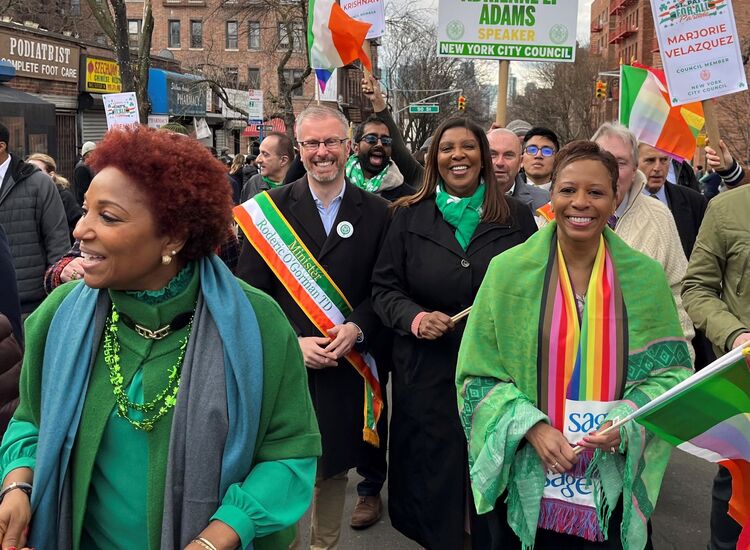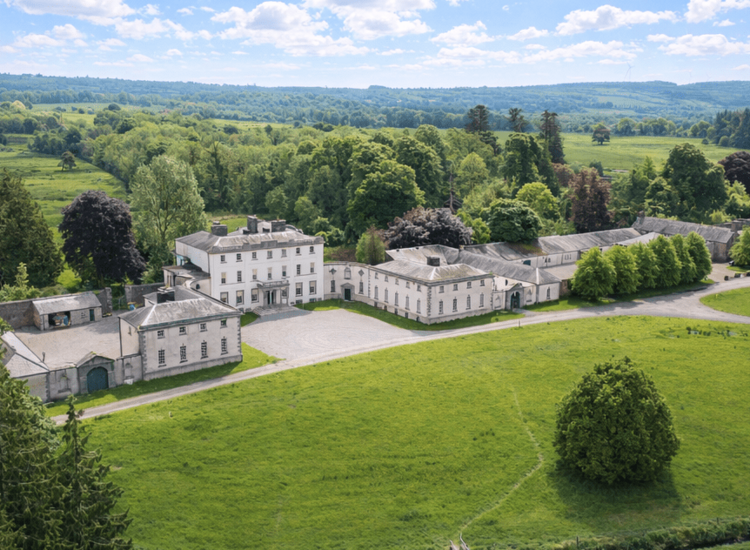[caption id="attachment_68396" align="aligncenter" width="600"]
The end is in sight.
The long campaign to preserve and reopen Manhattan’s St. Brigid’s Church will see its goal realized in 2012, supporters have told the Irish Echo.
Local reports that the official unveiling might be on Feb. 1, St. Brigid’s Day, would appear, however, to be overly optimistic.
“I’d say that May 1 is more realistic,” said Ed Torres, the chairman of the Committee to Save St. Brigid’s.
The church, which overlooks Tompkins Square Park in the East Village, was at the center of a dispute from the day in 2001 it was declared unsafe by the Catholic Archdiocese of New York until 2008, when it was dramatically saved by an anonymous benefactor’s gift of $20 million to the parish and its school.
In early 2005, after the parishioners’ campaign became more broadly known, Irish groups and individuals threw their support behind the committee’s legal battle and kept preservation a live issue with events like Bards for St. Brigid’s. Prominent supporters included Peg Breen, the president of the New York Landmarks Conservancy, film actor Matt Dillon and writer Peter Quinn.
The structure had been built by and for Famine immigrants in 1848-9 and had been at the heart of the Irish New York story for generations. It is also a very early example of the work of County Tipperary-born architect Patrick Keely, the most prolific builder of Christian churches – an estimated 700 -- in 19th century America.
“It seems miraculous that this day will happen,” said Quinn, who like Breen can trace his roots to Famine-era ancestors.
“It seemed improbable that it could be saved. When I got involved, it was the mother of lost causes. The gift came out of the blue,” he added.
“I said at one of those meetings that the archdiocese had everything on their side except St. Brigid,” said Quinn, whose family has close ties to the parish. “The archdiocese said there was no money, and seemed determined to tear it down.”
Indeed, the demolition process began on one Thursday afternoon in July 2006, and before a court order could halt it, stained glass windows that had been donated in the late 19th century by Irish immigrant families were smashed and a huge hole was punched in the east wall at the back of the building.
Another feature of the building, one that sparked huge interest in St. Brigid’s, were the sculpted faces at the top of the pillars, which were said to be those of the original Irish shipwrights involved in the building of the church.
Torres, who lives nearby said that the pillars have been encased by the present-day workmen, many of whom are Irish.
He said that the frenetic activity there at late hours in recent weeks might have given the Feb. 1 story wings. “The last time I was in there, there were at least 60 people working from different production companies,” he said, adding, however, that the hours have been scaled back probably because of complaints about noise.
“But, believe me, they're trying,” Torres said. “I’m impressed with what I’ve seen. All quality, all top-notch stuff. The heating and electrical systems are in. They have an elevator.”
The east wall, which the Archdiocese said was unsafe, proved to be sturdy, but the north wall had to be entirely rebuilt. The rest of the building was supported to enable that process. “That was a big hit,” Torres said, in reference to the cost. “And they continued to encounter problems.”
Meanwhile, the neighborhood’s residents are upbeat, reported local campaigner Carolyn Ratcliffe. “We are all excited about how good St. Brigid’s is looking from what we can see. The copper roof gleams in the sunlight; the faux brownstone actually looks pretty good,” she said. “The window mullions are a dark green with clear glass inset for the present. We’ve been told that the contract is out for real stained glass.”
“The front is still shrouded, but the north side looks extremely promising,” Ratcliffe added. “I was told that the inscribed bell has been cleaned and reinstalled.”
Paul Dougherty, another campaigner who lives in the neighborhood, said that he would like to see Irish fraternal organizations involved in the reopening. “I think the Emerald Societies and AOH would be wonderful custodians and stewards of its history being preserved in the life of the new parish,” he said. “Maybe they could outreach to legacy families, like mine, who were once part of the parish, but moved away decades or generations ago?”
Dougherty said: “I hope that the Archdiocese is creative in engaging the neighborhood that has changed dramatically in the last ten years and that they can find a pastor who can relate to both the new and old neighborhood.”
The Archdiocese declined to comment on the reopening, when contacted by the Echo.








